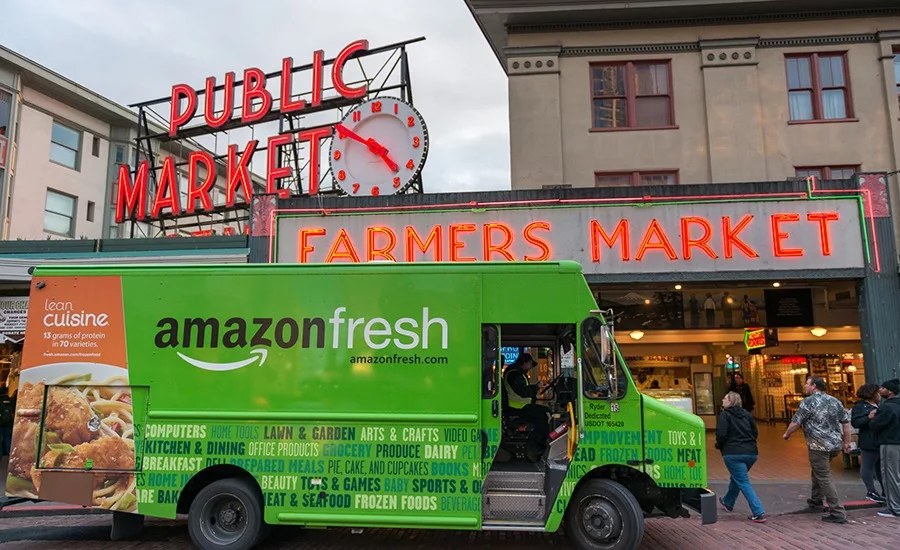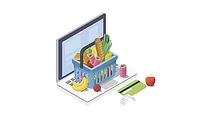Facing e-Commerce packaging challenges
Consumers are driving a boom period for online food ordering, but manufactures will need to fundamentally change packaging and supply chain to keep up.

It’s no secret that E-commerce has expanded rapidly in recent years — everyone knows at least one person who has an Amazon Prime account they can use to get free two-day shipping, and even your mom is ordering K-Cups on her phone.
But it’s also no secret that e-commerce differs from traditional retail outlets, with more touchpoints involved before a product reaches a customer. And thus, the changes in shopping habits will also mean packaging and supply chain challenges.
In fact, this shift in purchasing habits touches on most vertical markets, including food, and serves as a primary driver in the demand for packaging machinery, according to The State of the Industry Report 2017, from PMMI, The Association for Packaging and Processing Technologies.
Not only are more consumers turning to e-commerce, they are also spending more money, more often.
According to PMMI’s study, 28 percent of consumers reported they were willing to pay extra for additional conveniences, creating new opportunities for e-commerce.
And more specifically, e-commerce has recently taken off in the grocery market to meet increasing consumer demands for convenience, driven in particular by millennials. Amazon is the best illustration of this phenomenon with its acquisition of high-end grocer Whole Foods.
E-commerce sales are growing particularly fast in the United States. While average U.S. retail growth in the first half of 2016 was just two percent for total retail, it was a substantial 16 percent for e-commerce, according to PMMI’s report. As this trend is on the upswing, e-commerce will continue to take market share from traditional retail channels for the foreseeable future.
Shaking up the supply chain
Food purchased online adds complexity to the traditional supply chain by increasing the resources necessary to deliver products to consumers, including packaging materials and product handlers. There are also fulfillment centers, transport providers (e.g., UPS, FedEx, USPS), and sortation centers which can end up adding five times more touch points than traditional retail stores.
This complex supply chain creates difficulties for suppliers as compared to a traditional brick and mortar stores. With so many increased touchpoints along the delivery route as well as the potential for return shipping, there is a much larger potential for product tampering or damage.
As a result, some manufacturers are re-evaluating the durability of their packaging, creating differentiation between e-commerce packaging and traditional packaging. This has also increased the use of protective packaging materials such as bubble wrap and air pillows.
With increased use of packaging materials in e-commerce from secondary and tertiary packaging, reduction of waste and sustainability are particularly important topics.
Companies are starting to move toward smaller, lighter layers requiring less material. Additionally, consumer preference toward sustainably packaged products is driving a continued focus on packaging optimization.
For example, Amazon is working directly with manufacturers to reduce overall packaging with its Certified Frustration-Free Packaging Program. Amazon promises its customers that any item ordered with the certification will be recyclable without excessive use of materials.
E-commerce has also changed the way logistics system builders, cold chain suppliers, automatic warehouse machines and solution providers operate. Increasing demand for different types of packaging materials and types.
Specific considerations impacting the food packaging market include:
- Safe product delivery
- Cost effective shipping
- Sustainability (including secondary and tertiary packaging)
- Ease of opening the package
- Innovative design
- Packaging sturdiness
- Unique supply chain logistics
- Positive customer experience
Additionally, the popularity of social media gives suppliers the ability to better understand and track the trends important to consumers. Using this broad platform, consumers can share their opinions and package opening experiences online. One example of this is, “unboxing” videos where consumers show themselves opening packages.
With an expected 6,000 attendees and 400 suppliers PACK EXPO East (April 16—18; Pennsylvania Convention Center) offers education opportunities and supplier insight to the myriad of ways consumer packaged goods (CPG) companies and original equipment manufacturers are handling e-commerce. Conveniently located in Philadelphia, the PMMI produced event is a mere drive from a third of the nation’s CPG companies.
Back by popular demand, PACK EXPO East will feature an Innovation Stage program showcasing many of the latest packaging advances. The free 30-minute sessions on the show floor provide a quick and convenient way to learn about key topics like e-commerce. Debuting for the first time at PACK EXPO East is the Forum at PACK EXPO. The interactive program offers 20-minute open sessions on the latest industry trends by the OpX Leadership Network, Institute of Packaging Professionals, Contract Packagers Association and PMMI Business Intelligence, followed by small group discussions and Q&A sessions.
For more information visit packexpoeast.com.
Looking for a reprint of this article?
From high-res PDFs to custom plaques, order your copy today!








